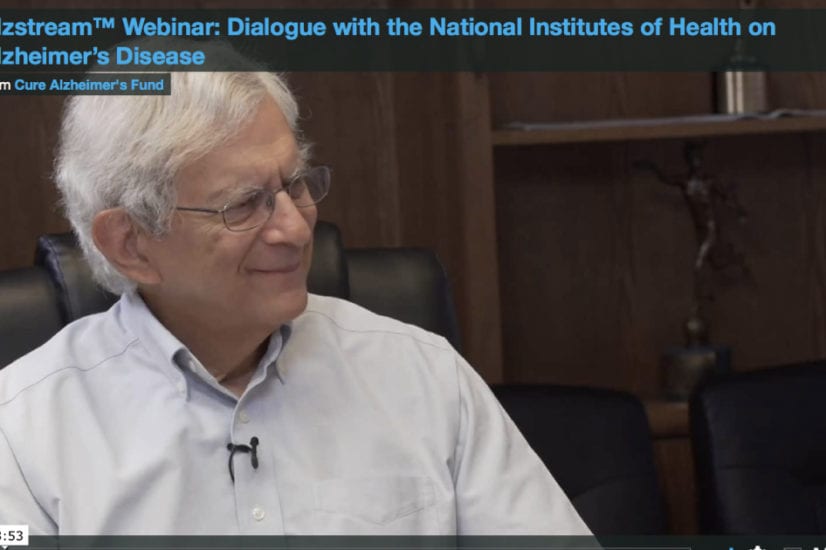
Posted July 18, 2013

An innovative new public/private collaboration between Cure Alzheimer’s Fund and the National Institute of Mental Health (NIMH) already has started to bear fruit.
In May, NIMH announced it would invest $4 million into Cure Alzheimer’s Fund’s ambitious Whole Genome Sequencing Project (WGS), which will speedily map out the entire genome’s connections to Alzheimer’s disease. This sequencing project, which covers the 97 percent of the genome that until very recently was regarded widely as “junk DNA,” is the largest single-disease, family-based Alzheimer’s investigation of its kind. Cure Alzheimer’s Fund already has allocated $5.4 million to the venture, and is committed to raising the remaining $1.5 million to complete the project.
The Whole Genome Sequencing Project process will go beyond previous techniques to allow researchers to understand the genetic switches controlling Alzheimer’s genes and how they are triggered by other genes and by environmental inputs. It also will yield an enormous amount of data, which will be analyzed using sophisticated bio-informatics (mathematical algorithms). Over the next several months, the study will begin analyzing the complete genomic sequences of more than 1,500 subjects in Alzheimer’s-affected families. Researchers then will compare the human genome sequences from family members with and without the disease to identify precisely all of the variations in our genomic DNA that influence the development of Alzheimer’s.
This CAF-NIMH partnership already is paying off.
The journal Neuron recently published results of a breakthrough discovery made by Rudy Tanzi, Ph.D., chairman of the Cure Alzheimer’s Fund Research Consortium, and colleagues at Massachusetts General Hospital, and co-funded by Cure Alzheimer’s Fund and NIMH. Tanzi found that excessive levels of the protein CD33 can impede the clearance of the plaque-forming protein Abeta, the key component of senile plaques in the brains of Alzheimer’s disease patients. “Too much CD33 appears to promote late-onset Alzheimer’s by preventing support cells from clearing out Abeta-containing plaques,” explains Tanzi.
Director of NIMH Thomas R. Insel affirmed the finding’s importance. “These results reveal, for the first time, a potentially powerful mechanism for protecting neurons from damaging toxicity and inflammation in brain disorders,” says Insel.
Funding for Alzheimer’s research consistently has lagged behind that for other major diseases, badly impeding research. “Based on what we have learned so far, we have many more good ideas than funding will allow us to explore,” says Tanzi. This trailblazing public/private endeavor allows the Alzheimer’s research community to begin the process of catching up.
“We can leverage private funds into a much stronger overall effort,” says Jeff Morby, chairman and co-founder of Cure Alzheimer’s Fund. “The WGS data will speed development of therapies, both to prevent the disease and arrest its progress. We are most grateful to the NIMH for partnering with us in this pioneering effort.”
“We are taking advantage of cutting-edge technology to discover exactly how our genes determine susceptibility to Alzheimer’s disease,” says Tanzi. “We will then use this knowledge to guide novel drug discovery efforts.”





